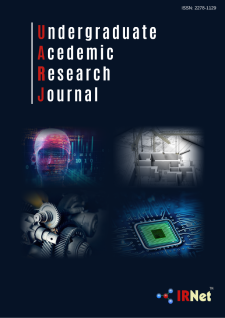Undergraduate Academic Research Journal UARJ
ISSN: 2278-1129
Conference

Abstracting and Indexing


UARJ
Time Motion Study on Soil Protection Works Time Motion Study on Soil Protection Works
Santosh Tekkannavar
Department of Civil Engineering, Ramaiah Institute of Technology, Bengaluru, Karnataka, India,
Abstract
Soil protection works have become popular due to their immense contribution to protecting the building from land sliding. A building structure requires a stable foundation to ensure best construction and durability. There are various engineering techniques in soil protection works, this paper consists of the Soil nailing procedure adopted in the Northwest Commercial multi use (NWCM) Project of Karle Infra Pvt. Ltd Company, currently executed by the vendor Geoengineering Pvt. Ltd. Soil nailing technique is used to stabilize the existing slope and construct retaining walls from top down. Steel nails are used as a reinforcement of soil which are drilled and grouted into the soil to create a compound mass similar to a gravity wall. The Soil nailing procedure is an alleviative measure to handle unstable natural soil slopes or unstable filled slopes. Soil protection works include multiple activities that occur in a systematic and sequential manner. The critical activities influencing the duration, schedule and progress of soil protection works are identified and a time-motion study is used as a tool to identify the difference in productivity to improve the progress of the soil protection work. Each activity of grouted nailing for one lift of excavation is carefully analyzed to record the time spent for that activity and to identify areas to reduce time and increase efficiency. The study can improve planning work based on the actual duration of activities identified and help to minimize delays at the construction site.
Recommended Citation
Tekkannavar, Santosh (2022) "Time Motion Study on Soil Protection Works," Undergraduate Academic Research Journal: Vol. 1: Iss. 2, Article 4. DOI: 10.47893/UARJ.2022.1031 Available at: https://www.interscience.in/uarj/vol1/iss2/4